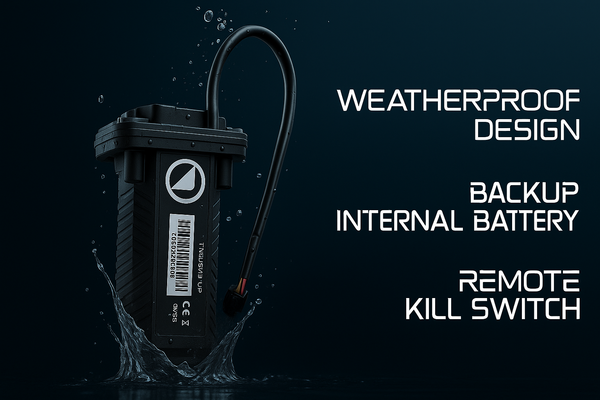Tesla Fleet Rentals: Is It Still a Profitable Business Model?
This blog dives deep into the profitability of Tesla rentals in 2025, examining the challenges rental businesses face with rising costs, Tesla's new API pricing, and increased competition. Learn how smart strategies and FleetBold’s solutions can help maintain profitability.

Introduction: Understanding Tesla Rentals and Their Profitability in 2025
The electric vehicle (EV) rental market has been growing rapidly, with a particular focus on Tesla as one of the leading brands in this space. Tesla’s high-tech features, eco-friendly appeal, and luxury design have attracted a diverse range of renters, from eco-conscious travelers to tech enthusiasts and rideshare drivers. Over the past few years, Tesla rentals have proven to be a lucrative business model for fleet owners, but as the market evolves, several factors need to be considered to maintain profitability.
In 2025, Tesla rental businesses are facing rising costs, Tesla’s new API pricing structure, and growing competition. This blog aims to explore these challenges in depth, discuss strategies for staying profitable, and introduce how FleetBold can help Tesla rental businesses thrive even in a competitive market.
Why Tesla Rental Demand Is Still Strong
Despite the increased competition in the market, Tesla rentals continue to be in high demand, driven by various factors:
- Eco-conscious Travelers
Tesla offers a unique opportunity for travelers to rent an eco-friendly vehicle, which is increasingly attractive to tourists who are focused on sustainability. Many people who choose Tesla rentals are looking for a greener alternative to traditional gasoline-powered vehicles. This trend is particularly strong in environmentally-conscious cities and tourist destinations where people prioritize eco-friendly practices. - Tech Enthusiasts
Tesla vehicles are well-known for their cutting-edge technology, including features like autopilot, over-the-air software updates, and advanced in-car entertainment. As a result, tech-savvy travelers and business professionals alike are eager to experience the future of driving through Tesla’s innovations. Renters who are interested in testing Tesla’s advanced features, such as the self-driving capabilities, are adding to the demand for Tesla rentals. - Rideshare Drivers
With rideshare platforms like Uber and Lyft becoming increasingly popular, many drivers are looking for high-end, electric vehicles to rent. Teslas, with their comfortable interiors, impressive range, and low maintenance, are becoming the go-to choice for rideshare drivers who want to elevate their service. The demand from rideshare drivers continues to grow, making Teslas a top pick for these platforms.
Despite the growing demand, the market is experiencing higher levels of competition, which means Tesla rental businesses need to refine their strategies to remain competitive and profitable.
Challenges to Tesla Rental Businesses in 2025
- Tesla API Pricing: A Significant Challenge
One of the most significant challenges facing Tesla rental businesses in 2025 is the rise in Tesla’s API pricing. As rental businesses rely on Tesla’s API to track and manage their fleets, the new pricing model introduced in January 2025 has led to higher operational costs. The breakdown of Tesla's API pricing is as follows:
- Streaming Signals: $1 per 150,000 signals
- Commands: $1 per 1,000 commands
- Data Requests: $1 per 500 requests
- Vehicle Wake-ups: $1 per 50 wake-ups
This shift in pricing adds up quickly for rental businesses that rely heavily on real-time tracking and fleet management. Increased costs for vehicle tracking, remote control, and data access can significantly erode profitability, especially in a market with growing competition and price sensitivity.
- Increased Competition
Another challenge is the increasing saturation of the Tesla rental market. More rental companies are adding Tesla vehicles to their fleets, making the market more competitive. Additionally, Tesla’s own rental program and leasing options are now directly competing with independent rental businesses. This has led to:
- Lower Rental Prices: As more companies offer Teslas, prices are driven down to remain competitive.
- Higher Maintenance Costs: More frequent vehicle usage means increased wear and tear, which leads to higher maintenance costs for Tesla rental businesses.
- More Competition from Tesla’s Own Program: Tesla’s rental program and leasing options provide direct competition, especially for customers who prefer dealing directly with the manufacturer.
How to Stay Profitable in the Tesla Rental Market
Despite the challenges, Tesla rental businesses can remain profitable by implementing several strategies that reduce costs and optimize operations:
- Optimize Rental Pricing Based on Demand
To maintain profitability, it’s crucial for rental businesses to adjust their pricing based on location and demand trends. For example, prices should be higher during peak seasons such as holidays or during major events. In areas where Tesla demand is lower, pricing strategies should be adjusted to be more competitive. - Use Telemetrics for Cost Tracking and Efficiency
Implementing telemetric solutions can help track vehicle performance, monitor driving behavior, and detect unnecessary costs. By using telematics, businesses can gather valuable data on vehicle usage, enabling them to make informed decisions that reduce operating costs. For example, telemetrics can help monitor excessive speeding, aggressive driving, and fuel efficiency. - Differentiate Your Rental Service
With so many Tesla rental options available, offering something unique can set your business apart from competitors. For instance, providing premium charging services (e.g., access to exclusive charging stations) or concierge services for customers can give your rental business a competitive edge. Providing exceptional customer service and unique value-added features will attract more customers and lead to repeat bookings.
Managing Maintenance and Depreciation Costs
- Battery Degradation
One of the key maintenance challenges with Tesla vehicles is battery degradation. Over time, as the battery ages, its range and performance decrease. Tesla owners must regularly service their batteries, which can cost thousands if not properly maintained.
- Cost Mitigation: By using FleetBold’s telemetrics insights, rental businesses can track battery usage and optimize charging habits to reduce wear and tear on the battery.
- Tire Wear and Brake Maintenance
Tesla vehicles, particularly those with high-torque acceleration, tend to wear through tires faster. Tires for models like the Tesla Model 3 can cost around $1,000 per set. Additionally, brake maintenance is critical, especially for performance models that experience more wear from frequent acceleration.
- Cost Mitigation: Implementing predictive maintenance strategies, using telemetrics to track driving habits, and ensuring routine tire and brake checks can prevent costly repairs and extend vehicle lifespan.
The Cost of Charging and Infrastructure Challenges
- Increasing Supercharger Rates
Supercharging has always been a key selling point for Tesla, but in 2025, rates for fast charging are increasing, which adds another layer of cost for rental businesses. The higher the charging rates, the more expensive it becomes to maintain a fleet of electric vehicles. - Charging Station Reliability
The availability of charging stations is another challenge. Public charging stations may be fully occupied, unreliable, or inconveniently located.
- Solution: To mitigate this, businesses can encourage renters to return the vehicles with a minimum charge and offer discounted charging solutions for long-term rentals.
- FleetBold’s Charging Insights
FleetBold’s telemetrics can help rental businesses optimize charging schedules and plan for smarter charging strategies, ultimately reducing the costs associated with charging.
FleetBold: The Key to Reducing Operational Costs and Enhancing Profitability
FleetBold’s API solution helps Tesla rental businesses manage their fleets more efficiently while reducing costs. Some of the key features include:
- Real-time Tesla Tracking: Track vehicles in real time, ensuring efficiency and accountability.
- Cost-effective: FleetBold’s API costs are up to 300% lower than Tesla’s official API, offering substantial savings.
- Mixed-Fleet Compatibility: FleetBold’s platform supports both Tesla and other OEM vehicles, providing flexibility for rental businesses that manage diverse fleets.
- Telemetrics Insights: Use predictive maintenance, charging insights, and vehicle usage data to reduce costs and extend vehicle lifespans.
By integrating FleetBold into your rental operations, you can stay competitive and profitable, even as costs rise in the industry.
Conclusion: The Future of Tesla Rentals in 2025 and Beyond
Despite rising costs, market saturation, and Tesla's new API pricing, the Tesla rental business model remains profitable for those who implement smart management strategies. Tesla’s continued demand, combined with tools like FleetBold’s API, allows rental businesses to stay competitive and reduce costs.
To remain profitable:
- Switch to FleetBold’s API for a 300% cost reduction in vehicle tracking.
- Optimize rental pricing and telemetrics to minimize unnecessary costs.
- Offer premium services to differentiate from competitors.
As the Tesla rental market continues to evolve, businesses that embrace these strategies and technologies will continue to thrive.
FAQs:
Q1: How can I stay profitable with Tesla rentals?
By optimizing pricing, using FleetBold for real-time tracking, offering premium services, and reducing maintenance costs.
Q2: Why is Tesla’s API pricing a concern for rental businesses?
Tesla’s new API pricing increases operational costs, particularly for vehicle tracking and remote control, impacting profitability.
Q3: How can I reduce maintenance costs for my Tesla fleet?
Implement predictive maintenance strategies, use telemetrics to monitor driver behavior, and optimize battery usage to extend vehicle lifespan.
Q4: How can FleetBold help my Tesla rental business?
FleetBold provides real-time tracking at a fraction of the cost of Tesla’s API, along with telemetrics and maintenance insights to improve fleet management.
Q5: What’s the future outlook for Tesla rentals?
With the right strategies, including smart fleet management and using technologies like FleetBold, Tesla rentals remain a profitable venture in 2025 and beyond.





